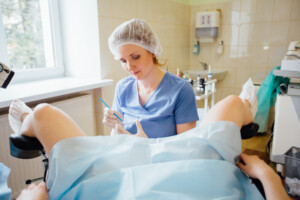
The common question is which detects cervical cancer better: the Pap smear or the Cobas HPV test?
“The recommendation for cytology (the architecture of the cell), and the presence or absence of the human Papilloma virus, HPV, varies based on a patient’s age and her Pap history,” explains Karen Patrusky, a board certified OBGYN and F.A.C.O.G. in private practice for 20+ years.
“Cytological testing [with the Pap smear] only is reserved for women ages 21-30 and is repeated at a frequency of every three years if normal,” continues Dr. Patrusky.
“For women ages 30 to 65, co-testing (cytology and HPV), is typically performed and is repeated every five years.
“If testing is abnormal, then closer surveillance with either more frequent Pap smear testing or colposcopy — evaluation of the cervix under magnification with possible biopsy — is performed.
“HPV alone is not widely practiced among health care practitioners.
“The most likely reason is that HPV is prevalent, and therefore, this testing in isolation can result in over-treatment especially in young women.”
Interestingly, in 2014 the FDA approved the Cobas HPV test as the main screening tool for cervical cancer in women 25 and older.
This doesn’t seem to make a whole lot of sense, since HPV is very prevalent, and the presence of this does not automatically mean cervical cancer or precancerous lesions.
A paper in the June 2014 Annals of Internal Medicine states that the best course of action is to have BOTH a Pap smear and HPV detection test.
Young women should discuss cervical cancer screening with their gynecologist.
A sexually active woman is never too young for a Pap smear.
If an HPV detection test is given with the Pap smear, and it comes up negative — along with a negative smear — then this is extremely reassuring that the patient does not have cervical cancer or pre-malignant changes in her cervix.
A woman of any young age should never only have the HPV test.
The Pap smear procedure takes only a few minutes, is non-invasive and extremely safe.










































